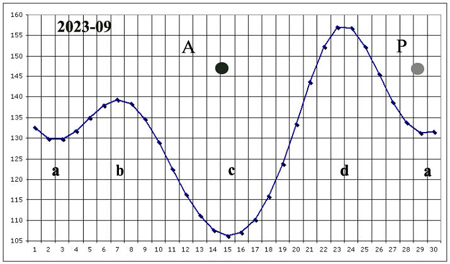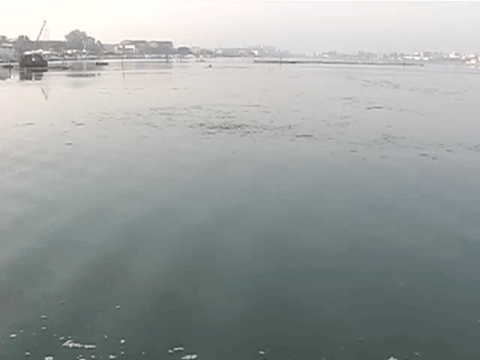========================================================

If you are not willing to accept even what you do not expect, you will never find what is hidden.
Causa latet, vis est notissima . . . (*)
On peut bien connaître l'existence d'une chose, sans connaître sa nature. (**)
Pascal, Pensées, iii, 238.
(*) While the effect is known, the cause remains hidden.
(**) One may well know the existence of a thing, without knowing its nature.
===================================================
When we want to communicate a new idea.
Jean Fourastié said that when we want to communicate a new idea, it must fit harmoniously into previous ideas' baggage, as if it were only a corollary, or a special case.
This is a useful recommendation in most cases. But not when fundamental inconsistencies burden the theory on the subject under discussion. Not when you understand that you have to start from a completely different point of view.
As it happens in the current theory on tides, when they tell you that they are mainly due to the attraction exerted by the Moon, even if this attraction is infinitesimal, compared to that exerted by the Earth on its waters.
Rather than say we don't know.
When the culprit of a crime isn't found, sometimes an innocent person is condemned, even when there are inconsistencies, making adjustments as best they can.
This is what happened with the tidal theory. Unable to find the true cause of the phenomenon, rather than admitting they didn't know, they preferred to assert that—in the case of tides—the horizontal component should be considered and the gravitational attraction formula adjusted.
Changing the formula isn't enough. .
As mentioned on the introduction page, there were other points to consider in addition to the formula, such as the behavior of the tides, which already tells you that the cause cannot be attraction.
In fact, tidal waves do not develop from east to west—as would be the case if the cause were the attraction exerted by the Moon and Sun—but within numerous tidal basins, in ways uncoordinated with that attraction.
And again, in many of these basins the frequency of the tides is bidiurnal, but in others it is diurnal. This last point alone would be enough to cut the knot and affirm that attraction cannot be the cause of the tides.
Based on what has been said so far.
Based on what has been said in itinerary #1 up to this point, I feel comfortable ruling out attraction as the cause of the tides, thus freeing me to propose an alternative hypothesis, supported, of course, by evidence.
Collecting evidence.
In this research, to demonstrate that water also uses cumulative-dissipative processes, thanks to its motion relative to other matter, I had to, among other things, consider the difference between how this happens in seeds (still on the ground) and how it happens in liquid water (molecules in motion).
In this regard, I had to investigate whether some perceptible effect could also occur in water, caused not by attraction, but by motion relative to, for example, the Moon. This was done by demonstrating two peculiarities of cumulative-dissipative processes in seeds: (1) they are triggered by motion relative to other matter, (2) at critical angular velocities, thus only during brief episodes of interaction.
In seeds, at critical angular velocities.
In seeds stationary on the ground, all molecules generally move at the same angular velocity relative to the Moon. When this occurs at a critical angular velocity, processes, either cumulative or dissipative, can occur in large numbers, but in distinct periods, for the reasons already discussed in the first part of this site, the one dedicated to seeds.
In fact, in seeds, when stationary on the ground, cumulative processes occur only in periods b-c and d-a of the calendar, and dissipative processes only in periods a-b and c-d.
In water - at any moment.
At this point in my research, I was thinking this way: that, unlike seeds, liquid water is composed of groups of molecules in motion, with two consequent characteristics of this motion.
The first is that water is not subject to the separation of cumulative-dissipative processes into two long periods, as happens in seeds.
The second is that in liquid water, the various molecules rarely move in coordination with each other.
Usually, cumulative-dissipative processes are not carried out in a coordinated manner among a large set of molecules.
Ultimately.
In fact, unlike what happens with seeds, in liquid water, the "force d" usually does not act on all molecules at the same time. It only acts on those moving at one of the critical angular velocities, relative to the Moon, for example.
Consequently, the processes that generate the tidal phenomenon—that is, the increase and decrease in the volume of water—are usually continuous, generally hidden from the naked eye, but not always.
Not in the cases given below.
Chaotic movements.


